 According to the NY Times, the US Forest Service continues to send crews into toxic smoke without respirators, leaving firefighters sickened. In related news: Canada’s wildfires are shifting east to the Prairies and Atlantic; scientists say climate predictions linking warming to more intense fires are proving true; debate arises over whether governments or individuals bear responsibility for fire prevention; and wildfire updates from Vancouver Island; Nova Scotia; Newfoundland; Arizona; and Spain.
According to the NY Times, the US Forest Service continues to send crews into toxic smoke without respirators, leaving firefighters sickened. In related news: Canada’s wildfires are shifting east to the Prairies and Atlantic; scientists say climate predictions linking warming to more intense fires are proving true; debate arises over whether governments or individuals bear responsibility for fire prevention; and wildfire updates from Vancouver Island; Nova Scotia; Newfoundland; Arizona; and Spain.
In other news: West Fraser’s proposed cut increase in Alberta faces pushback; Dallas Smith weighs in on LKSM Forestry strike on Vancouver Island; Pennsylvania’s Allegheny National Forest is ramping up logging; controversial timber sales begin in Indiana’s Hoosier National Forest; and Montana signs a historic forest restoration agreement. Meanwhile: Brazilian wood exports face collapse under US tariffs; Canadian housing starts rise 4% in July; lumber futures continue to drop; US consumer sentiment dropped on inflation fears; and US building material prices continue to climb.
Finally, from Tongass spruce to Steinway pianos — why the music may soon stop.
Kelly McCloskey, Tree Frog News Editor
 BC Wood recently announced that Premier David Eby will open the 22nd Annual Global Buyers Mission (GBM) on Friday, September 5th. This shows the significance of the GBM to British Columbia’s forestry and value-added wood industry. Kicking off the tradeshow, the Premier will join delegates on the tradeshow floor. Premier Eby’s presence highlights the critical role of British Columbia’s wood and forestry sector in driving innovation, sustainability, and economic growth. With recent U.S. decisions increasing countervailing duties on Canadian softwood lumber to over 35%, there’s an unprecedented level of uncertainty about how the market will be impacted. A newly announced panel presentation will analyse the escalating tariffs threatening to disrupt supply chains, inflate costs, and reshape the forestry industry. Forest Minister Parmar will introduce the panel and participants Mo Amir, Nick Arkle, Liz Kovach and Kurt Niquidet on September 4th.
BC Wood recently announced that Premier David Eby will open the 22nd Annual Global Buyers Mission (GBM) on Friday, September 5th. This shows the significance of the GBM to British Columbia’s forestry and value-added wood industry. Kicking off the tradeshow, the Premier will join delegates on the tradeshow floor. Premier Eby’s presence highlights the critical role of British Columbia’s wood and forestry sector in driving innovation, sustainability, and economic growth. With recent U.S. decisions increasing countervailing duties on Canadian softwood lumber to over 35%, there’s an unprecedented level of uncertainty about how the market will be impacted. A newly announced panel presentation will analyse the escalating tariffs threatening to disrupt supply chains, inflate costs, and reshape the forestry industry. Forest Minister Parmar will introduce the panel and participants Mo Amir, Nick Arkle, Liz Kovach and Kurt Niquidet on September 4th.
 The Liberal government has released a proposal for its new housing entity, laying out suggested loan offerings and other details ahead of the planned fall launch. …The Liberals said the new entity would develop and manage affordable housing projects and partner with builders for the construction phase, providing $10 billion in low-cost financing and capital to affordable home builders. …The BCH would also provide $25 billion in debt financing and $1 billion in equity financing to prefabricated home builders, with the Liberals saying the housing type can reduce construction times by up to 50 per cent and lower costs by up to 20 per cent. The entity would issue bulk orders of units from manufacturers to create sustained demand.
The Liberal government has released a proposal for its new housing entity, laying out suggested loan offerings and other details ahead of the planned fall launch. …The Liberals said the new entity would develop and manage affordable housing projects and partner with builders for the construction phase, providing $10 billion in low-cost financing and capital to affordable home builders. …The BCH would also provide $25 billion in debt financing and $1 billion in equity financing to prefabricated home builders, with the Liberals saying the housing type can reduce construction times by up to 50 per cent and lower costs by up to 20 per cent. The entity would issue bulk orders of units from manufacturers to create sustained demand. With recent U.S. decisions increasing countervailing duties on Canadian softwood lumber to over 35%, there’s an unprecedented level of uncertainty about how the market will be impacted. These escalating tariffs threaten to disrupt supply chains, inflate costs, and reshape the forestry industry. At BC Wood, we’re dedicated to helping you navigate these challenges. Which is why we will be hosting a Tariffs Panel at the Global Buyers Mission (September 4, 2025). Introduced by Minister Ravi Parmar, the panel will bring together top leaders to analyze the challenges, opportunities, and strategies amid escalating trade tensions. Moderated by Mo Amir, GM of SPF Precut Lumber, the panel will include: Nick Arkle, CEO, Gorman Brothers Lumber; Liz Kovach, President, Supply-Build Canada; and Kurt Niquidet, President, BC Lumber Trade Council.
With recent U.S. decisions increasing countervailing duties on Canadian softwood lumber to over 35%, there’s an unprecedented level of uncertainty about how the market will be impacted. These escalating tariffs threaten to disrupt supply chains, inflate costs, and reshape the forestry industry. At BC Wood, we’re dedicated to helping you navigate these challenges. Which is why we will be hosting a Tariffs Panel at the Global Buyers Mission (September 4, 2025). Introduced by Minister Ravi Parmar, the panel will bring together top leaders to analyze the challenges, opportunities, and strategies amid escalating trade tensions. Moderated by Mo Amir, GM of SPF Precut Lumber, the panel will include: Nick Arkle, CEO, Gorman Brothers Lumber; Liz Kovach, President, Supply-Build Canada; and Kurt Niquidet, President, BC Lumber Trade Council.

 Early last September, firefighters were in the final stages of containing a 33,000-hectare wildfire complex in Alberta’s Jasper National Park. Elsewhere, park workers were already replanting the first batch of trees in the recently scorched earth. The Douglas firs were chosen because they resist fire better than other conifers, according to Marcia DeWandel, vegetation restoration specialist for Parks Canada. However, replanting so soon after a fire is much more exception than rule. Replanting is typically expensive, time consuming, labour intensive — and doesn’t always work. …In most cases, it can take years for replanting to begin after a fire. …”It’s actually really important not to speed and just go right after a fire,” says Jess Kaknevicius, CEO of Forests Canada, one of the organizations supporting Ogoki’s replanting. …In some replanted areas, ensuring survival is easier said than done, especially when dealing with other effects of climate change.
Early last September, firefighters were in the final stages of containing a 33,000-hectare wildfire complex in Alberta’s Jasper National Park. Elsewhere, park workers were already replanting the first batch of trees in the recently scorched earth. The Douglas firs were chosen because they resist fire better than other conifers, according to Marcia DeWandel, vegetation restoration specialist for Parks Canada. However, replanting so soon after a fire is much more exception than rule. Replanting is typically expensive, time consuming, labour intensive — and doesn’t always work. …In most cases, it can take years for replanting to begin after a fire. …”It’s actually really important not to speed and just go right after a fire,” says Jess Kaknevicius, CEO of Forests Canada, one of the organizations supporting Ogoki’s replanting. …In some replanted areas, ensuring survival is easier said than done, especially when dealing with other effects of climate change.  TORONTO — Canada’s 2025 wildfire season is now the second-worst on record. The latest figures posted by the Canadian Interagency Forest Fire Centre suggest the fires have torn through 72,000 square kilometres, an area roughly the size of New Brunswick.That surpasses the next worst season in 1989 and is about half the area burned during the record-setting 2023 season, according to a federal database of wildfire seasons dating back to 1972. Climate change, driven by the burning of fossil fuels, has made Canada’s fire season longer and more intense, scientists say. The last three fire seasons are all in the 10 worst on record. “We really need to do a lot more to manage our forest, to reduce the impact of climate change and better prepare the communities that are at risk,” said Anabela Bonada, managing director of climate science at the Intact Centre on Climate Adaptation at the University of Waterloo.
TORONTO — Canada’s 2025 wildfire season is now the second-worst on record. The latest figures posted by the Canadian Interagency Forest Fire Centre suggest the fires have torn through 72,000 square kilometres, an area roughly the size of New Brunswick.That surpasses the next worst season in 1989 and is about half the area burned during the record-setting 2023 season, according to a federal database of wildfire seasons dating back to 1972. Climate change, driven by the burning of fossil fuels, has made Canada’s fire season longer and more intense, scientists say. The last three fire seasons are all in the 10 worst on record. “We really need to do a lot more to manage our forest, to reduce the impact of climate change and better prepare the communities that are at risk,” said Anabela Bonada, managing director of climate science at the Intact Centre on Climate Adaptation at the University of Waterloo.
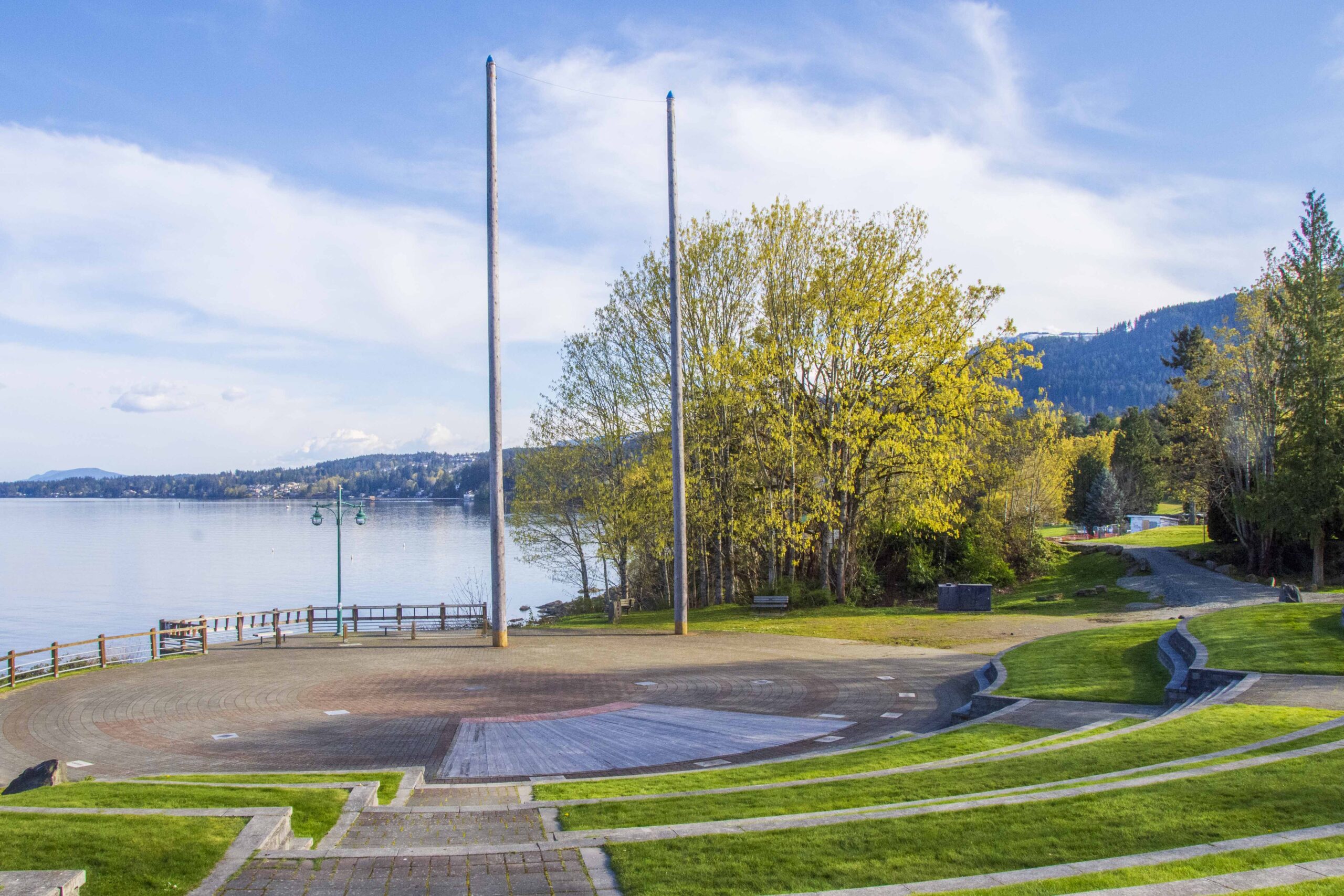 …It’s a rare sight today to see a spar tree in a timber harvesting area, but you can see them at any loggers’ sports shows. This year locals will have a chance to see climbers in action on Sunday, Sept. 14 at the Transfer Beach Amphitheatre. Just a couple of weeks ago the state of the two spar poles at the amphitheatre was in question. …Dave MacLeod from Husky Forest Service, a professional tree climber as well as a loggers’ sports tree climber, said instead of destroying the trees, they could be taken out to find out where the rot ends. His suggestion was accepted and the trees were taken out by RKM Cranes on July 30 and laid down to be examined. MacLeod did tests at various lengths of the trees and it was determined that the rot was up 10 feet from the bottom, so 11 feet was cut off.
…It’s a rare sight today to see a spar tree in a timber harvesting area, but you can see them at any loggers’ sports shows. This year locals will have a chance to see climbers in action on Sunday, Sept. 14 at the Transfer Beach Amphitheatre. Just a couple of weeks ago the state of the two spar poles at the amphitheatre was in question. …Dave MacLeod from Husky Forest Service, a professional tree climber as well as a loggers’ sports tree climber, said instead of destroying the trees, they could be taken out to find out where the rot ends. His suggestion was accepted and the trees were taken out by RKM Cranes on July 30 and laid down to be examined. MacLeod did tests at various lengths of the trees and it was determined that the rot was up 10 feet from the bottom, so 11 feet was cut off.
 The human side of forestry is often overlooked but always present. Seeing the forest for the trees in this case means connecting the dots between the many ways that people interact with, benefit from and shape natural spaces, and the consequences these activities are having on everything from environmental sustainability to community wellbeing. In this issue, we delve into the social sciences of forestry, highlighting how the academic work, career paths and actions taken by our UBC Forestry community are shaping the future for the sake of humans and the planet.
The human side of forestry is often overlooked but always present. Seeing the forest for the trees in this case means connecting the dots between the many ways that people interact with, benefit from and shape natural spaces, and the consequences these activities are having on everything from environmental sustainability to community wellbeing. In this issue, we delve into the social sciences of forestry, highlighting how the academic work, career paths and actions taken by our UBC Forestry community are shaping the future for the sake of humans and the planet.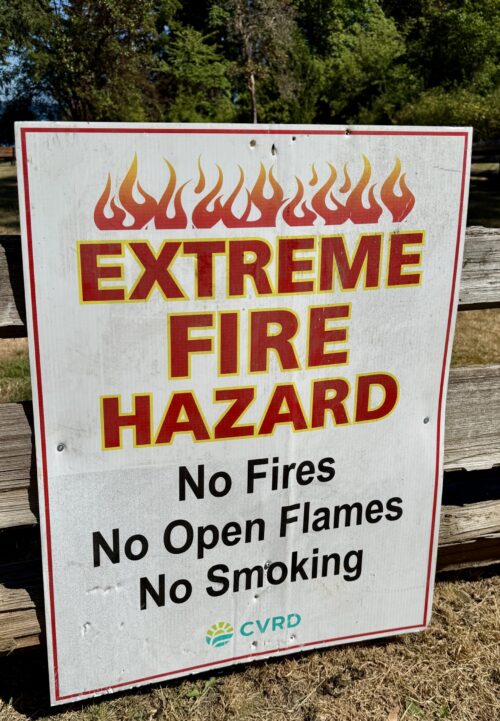 …as climate change fuels more frequent and intense wildfires, governments can reduce the damage and protect lives with proactive, targeted actions. That means strengthening policies that guide where and how we build, investing in land and fuel-management strategies, supporting Indigenous leadership and stewardship, expanding emergency-response capacity and accelerating emissions reduction. The solutions are within reach, but they require governments to lead with urgency, coordination and commitment. …Here are five key actions governments can take to reduce wildfire risk — noting that no single strategy can solve the problem by itself: Stop encouraging building in harm’s way; Make new development fire-resilient; Manage forests and reduce wildfire fuel; Strengthen firefighting capacity; and Cut carbon pollution to avoid runaway risk. Governments at all levels face a clear choice: continue with business as usual and see fire seasons grow worse or take bold action to reduce risk, protect people and ensure public resources are spent wisely.
…as climate change fuels more frequent and intense wildfires, governments can reduce the damage and protect lives with proactive, targeted actions. That means strengthening policies that guide where and how we build, investing in land and fuel-management strategies, supporting Indigenous leadership and stewardship, expanding emergency-response capacity and accelerating emissions reduction. The solutions are within reach, but they require governments to lead with urgency, coordination and commitment. …Here are five key actions governments can take to reduce wildfire risk — noting that no single strategy can solve the problem by itself: Stop encouraging building in harm’s way; Make new development fire-resilient; Manage forests and reduce wildfire fuel; Strengthen firefighting capacity; and Cut carbon pollution to avoid runaway risk. Governments at all levels face a clear choice: continue with business as usual and see fire seasons grow worse or take bold action to reduce risk, protect people and ensure public resources are spent wisely.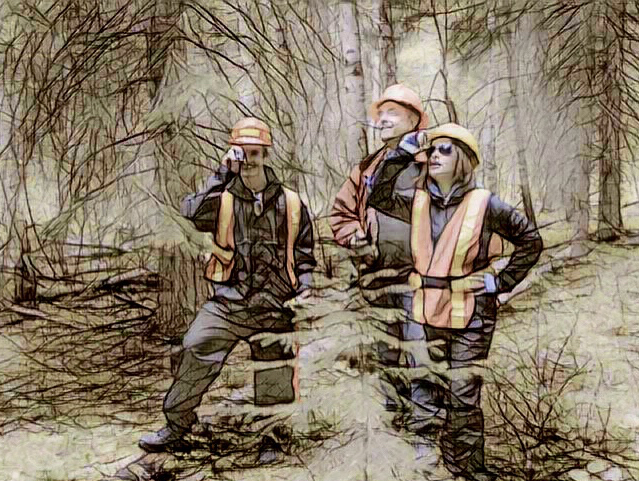 CNC’s Applied Research team received a $170,775 Applied Research Tools and Instruments (ARTI) grant through the Natural Sciences and Engineering Research Council of Canada (NSERC) for the creation of a state-of-the-art remote sensing lab. …The grant allows for the acquisition of terrestrial LiDAR scanners, allowing researchers to capture, analyze and better understand individual tree characteristics, forest structure, and wildfire hazards, among other forest attributes. CNC research fellow Dr. Pablo Crespell will lead research activities related to remote sensing lab purchases and operation, including drones, LiDAR sensors and scanners, multispectral sensors, software applications, and computer hardware. Grant funds will also be used to support the costs of relevant training for CNC research staff, such as drone pilot training and new analysis approaches.
CNC’s Applied Research team received a $170,775 Applied Research Tools and Instruments (ARTI) grant through the Natural Sciences and Engineering Research Council of Canada (NSERC) for the creation of a state-of-the-art remote sensing lab. …The grant allows for the acquisition of terrestrial LiDAR scanners, allowing researchers to capture, analyze and better understand individual tree characteristics, forest structure, and wildfire hazards, among other forest attributes. CNC research fellow Dr. Pablo Crespell will lead research activities related to remote sensing lab purchases and operation, including drones, LiDAR sensors and scanners, multispectral sensors, software applications, and computer hardware. Grant funds will also be used to support the costs of relevant training for CNC research staff, such as drone pilot training and new analysis approaches.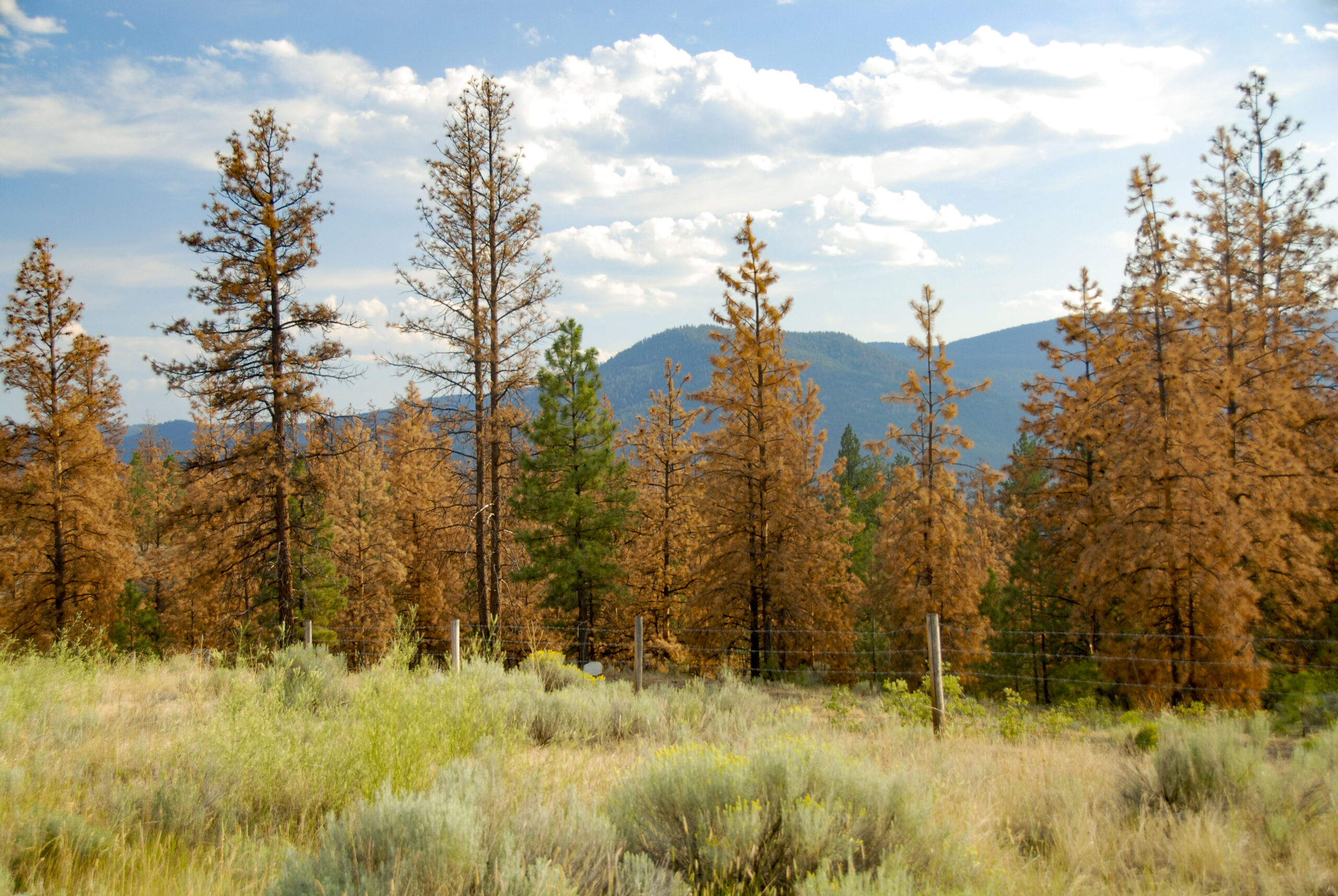 Ottawa is offering $45.7 million for projects in B.C. and across Canada that advance knowledge about wildfires. The projects will be focused on protecting Canadians from the growing threat of wildfires, strengthening wildfire risk assessments, and improving mitigation and adaptive forestry practices. …The Vancouver-based Métis Wildfire Community Research Initiative is among the funding recipients. “Our approach is different because we are building strong relationships with local people.” said Joe Desjarlais, Director of Research for the B.C. Metis Foundation. “We’re training them to do wildfire research, to recover their own knowledge for their own benefit, to give them a voice.” …Natural Resources Canada said annual national costs for fighting wildland fire total over $1 billion. It says fire-suppression costs could double by 2040.
Ottawa is offering $45.7 million for projects in B.C. and across Canada that advance knowledge about wildfires. The projects will be focused on protecting Canadians from the growing threat of wildfires, strengthening wildfire risk assessments, and improving mitigation and adaptive forestry practices. …The Vancouver-based Métis Wildfire Community Research Initiative is among the funding recipients. “Our approach is different because we are building strong relationships with local people.” said Joe Desjarlais, Director of Research for the B.C. Metis Foundation. “We’re training them to do wildfire research, to recover their own knowledge for their own benefit, to give them a voice.” …Natural Resources Canada said annual national costs for fighting wildland fire total over $1 billion. It says fire-suppression costs could double by 2040.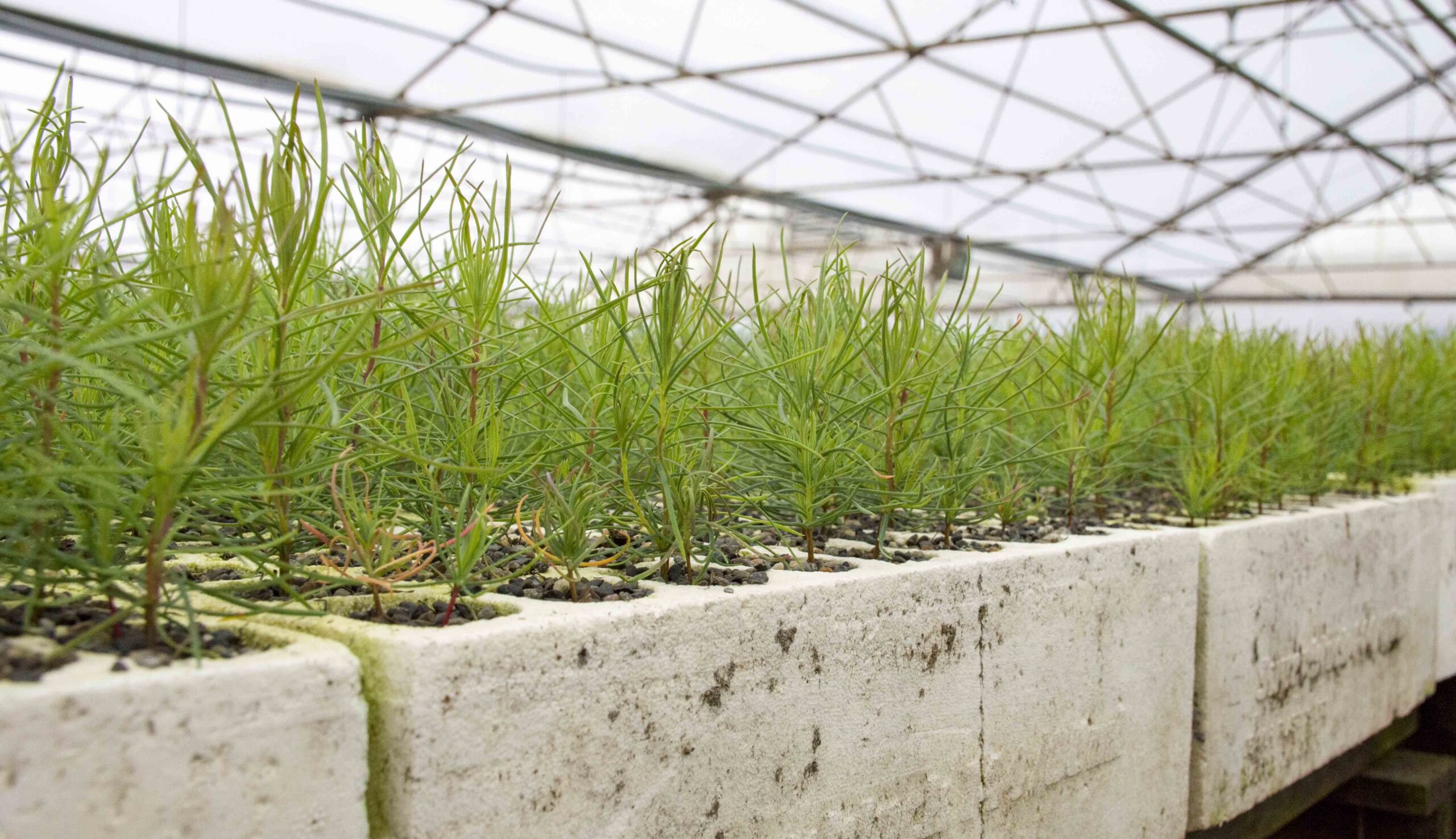 The number of trees planted in British Columbia is set to decline for a third year in a row, falling a combined 135 million seedlings short of a B.C. government’s election promise to increase planting amid a string of devastating wildfire seasons. In B.C., the logging industry is legally required to reforest after harvesting. But as harvest levels have dropped, so too has tree planting. The province planted 281 million tree seedlings in 2024. But by the end of the 2025 season, that number is expected to drop to 238 million, according to the Ministry of Forests. By the end of 2026, projections from the Canadian Tree Nursery Association (CTNA) suggest the number could fall even further to 226 million — far short of the 300 million trees promised by the NDP government in the last election.
The number of trees planted in British Columbia is set to decline for a third year in a row, falling a combined 135 million seedlings short of a B.C. government’s election promise to increase planting amid a string of devastating wildfire seasons. In B.C., the logging industry is legally required to reforest after harvesting. But as harvest levels have dropped, so too has tree planting. The province planted 281 million tree seedlings in 2024. But by the end of the 2025 season, that number is expected to drop to 238 million, according to the Ministry of Forests. By the end of 2026, projections from the Canadian Tree Nursery Association (CTNA) suggest the number could fall even further to 226 million — far short of the 300 million trees promised by the NDP government in the last election.

 SMITHERS – The Forest Practices Board has released the results of its investigation into a complaint about logging in the Lemieux and Gardner Creek watersheds, 30 kilometres southeast of Smithers. A resident alleged that over-harvesting had dried up creeks and wells, and that logging proceeded without proper public consultation. Board investigators examined recent harvesting, road construction and maintenance by three licence holders: BC Timber Sales (BCTS), Kyah Development Corporation (KDC) and the holder of woodlot licence W0104. Investigators assessed whether licensees met legal requirements for water management and public review. All three licensees complied with requirements for public review. BCTS and KDC exceeded requirements by voluntarily sharing operational-planning information with stakeholders. BCTS and KDC also met all water- management requirements.
SMITHERS – The Forest Practices Board has released the results of its investigation into a complaint about logging in the Lemieux and Gardner Creek watersheds, 30 kilometres southeast of Smithers. A resident alleged that over-harvesting had dried up creeks and wells, and that logging proceeded without proper public consultation. Board investigators examined recent harvesting, road construction and maintenance by three licence holders: BC Timber Sales (BCTS), Kyah Development Corporation (KDC) and the holder of woodlot licence W0104. Investigators assessed whether licensees met legal requirements for water management and public review. All three licensees complied with requirements for public review. BCTS and KDC exceeded requirements by voluntarily sharing operational-planning information with stakeholders. BCTS and KDC also met all water- management requirements. One of Revelstoke’s most popular mountains for Nordic skiing and cycling has reappeared on the map for B.C.’s lumber licensee, raising questions of how recreationists’ favourite routes could be impacted. Within the last year, BC Timber Sales (BCTS) issued a Forestry Operations Map outlining plans for Mount MacPherson, home to the Revelstoke Nordic Ski Club (RNSC) and various Revelstoke Cycling Association trails. Currently, several dozen hectares in the Wetask-Mt. MacPherson area are licensed for cut blocks, while several hectares more are mapped for retention areas and roads. …Operations are indicated to run until 2027, and all six cut block licenses have a planned development date of last Jan. 15. In a statement the Ministry of Forests said one of its recent licences was auctioned last spring and will be harvested this fall or winter. Another licence currently sits in the development stage, slated for auction next summer.
One of Revelstoke’s most popular mountains for Nordic skiing and cycling has reappeared on the map for B.C.’s lumber licensee, raising questions of how recreationists’ favourite routes could be impacted. Within the last year, BC Timber Sales (BCTS) issued a Forestry Operations Map outlining plans for Mount MacPherson, home to the Revelstoke Nordic Ski Club (RNSC) and various Revelstoke Cycling Association trails. Currently, several dozen hectares in the Wetask-Mt. MacPherson area are licensed for cut blocks, while several hectares more are mapped for retention areas and roads. …Operations are indicated to run until 2027, and all six cut block licenses have a planned development date of last Jan. 15. In a statement the Ministry of Forests said one of its recent licences was auctioned last spring and will be harvested this fall or winter. Another licence currently sits in the development stage, slated for auction next summer.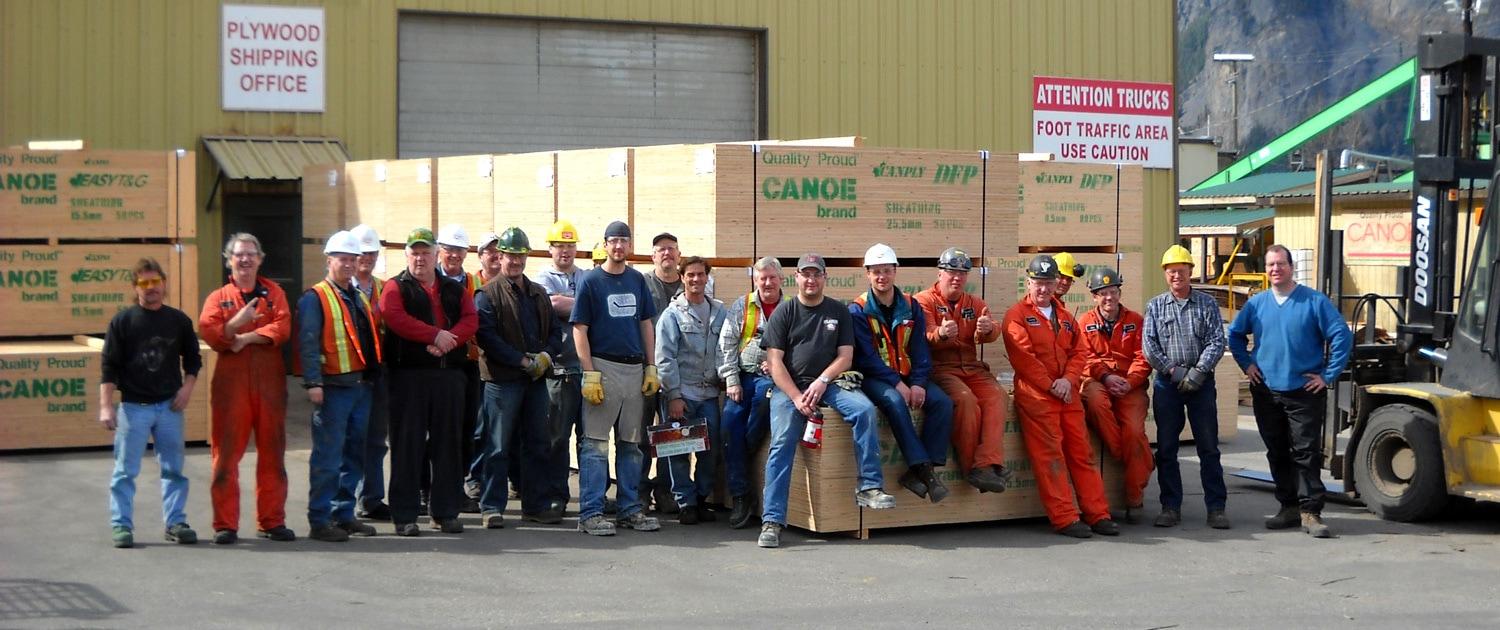







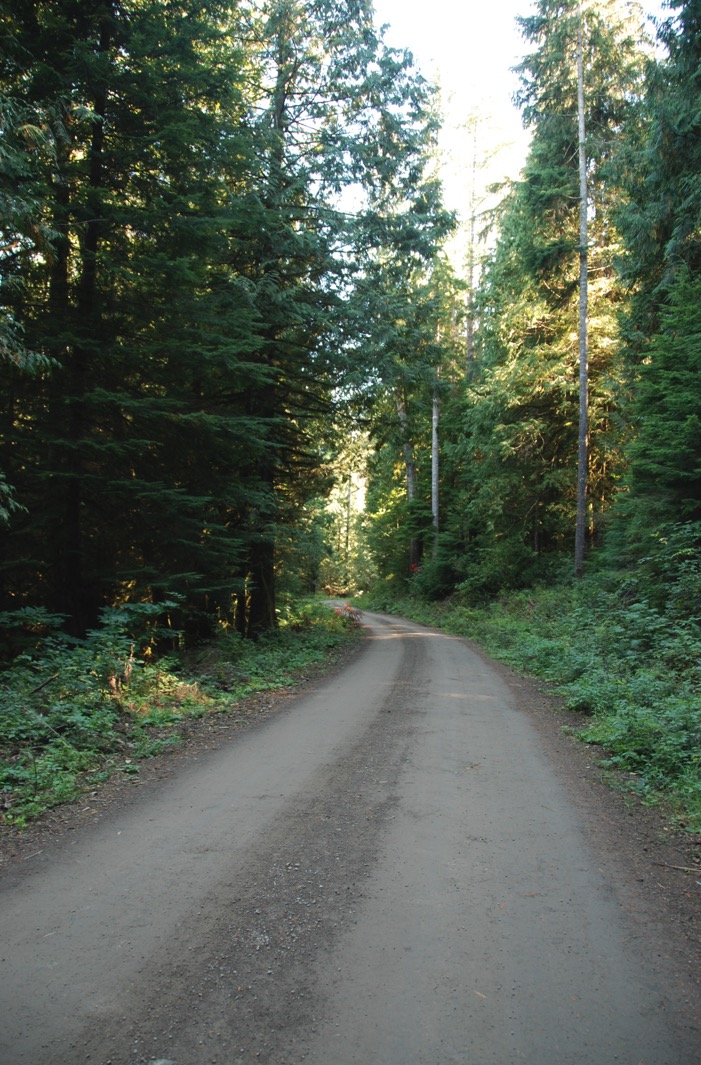 Pointing to several recent closures that caused major traffic disruptions on Highway 97, Okanagan MPs and MLAs are urging the provincial and federal governments to work together on a solution. The group of six politicians gathered outside Okanagan Lake West-South Kelowna MP Dan Albas’ office on Tuesday (Aug. 12) to offer their own idea — pave 201 Forest Service Road (201 FSR) between Kelowna and Penticton so it can be used during emergency closures of Highway 97. “People are going to be taking that road, as we’ve seen reported by local journalists, and they’re getting lost,” Albas pointed out. “So this is going to happen whether or not the federal and provincial governments decide to act, but we can’t tolerate that.” The 201 FSR is a long and winding route that many Okanagan residents use during extended closures of Highway 97.
Pointing to several recent closures that caused major traffic disruptions on Highway 97, Okanagan MPs and MLAs are urging the provincial and federal governments to work together on a solution. The group of six politicians gathered outside Okanagan Lake West-South Kelowna MP Dan Albas’ office on Tuesday (Aug. 12) to offer their own idea — pave 201 Forest Service Road (201 FSR) between Kelowna and Penticton so it can be used during emergency closures of Highway 97. “People are going to be taking that road, as we’ve seen reported by local journalists, and they’re getting lost,” Albas pointed out. “So this is going to happen whether or not the federal and provincial governments decide to act, but we can’t tolerate that.” The 201 FSR is a long and winding route that many Okanagan residents use during extended closures of Highway 97.


 PATRAS, Greece,/MADRID – Wildfires caused by arsonists or thunderstorms and fanned by a heatwave and strong winds wreaked destruction across southern Europe on Wednesday, burning homes and forcing thousands of residents and tourists to flee. Fire has affected nearly 440,000 hectares in the eurozone so far in 2025, double the average for the same period of the year since 2006… Authorities ordered residents of a town of about 7,700 people near Patras to evacuate on Tuesday and issued new alerts on Wednesday, advising residents of two nearby villages to leave. On the Greek islands of Chios, in the east, and Cephalonia, in the west, both popular with tourists, authorities told people to move to safety as fires spread. In Spain, a volunteer firefighter died from severe burns and several people were hospitalised as state weather agency AEMET warned that almost all of the country was at extreme or very high risk of fire.
PATRAS, Greece,/MADRID – Wildfires caused by arsonists or thunderstorms and fanned by a heatwave and strong winds wreaked destruction across southern Europe on Wednesday, burning homes and forcing thousands of residents and tourists to flee. Fire has affected nearly 440,000 hectares in the eurozone so far in 2025, double the average for the same period of the year since 2006… Authorities ordered residents of a town of about 7,700 people near Patras to evacuate on Tuesday and issued new alerts on Wednesday, advising residents of two nearby villages to leave. On the Greek islands of Chios, in the east, and Cephalonia, in the west, both popular with tourists, authorities told people to move to safety as fires spread. In Spain, a volunteer firefighter died from severe burns and several people were hospitalised as state weather agency AEMET warned that almost all of the country was at extreme or very high risk of fire.